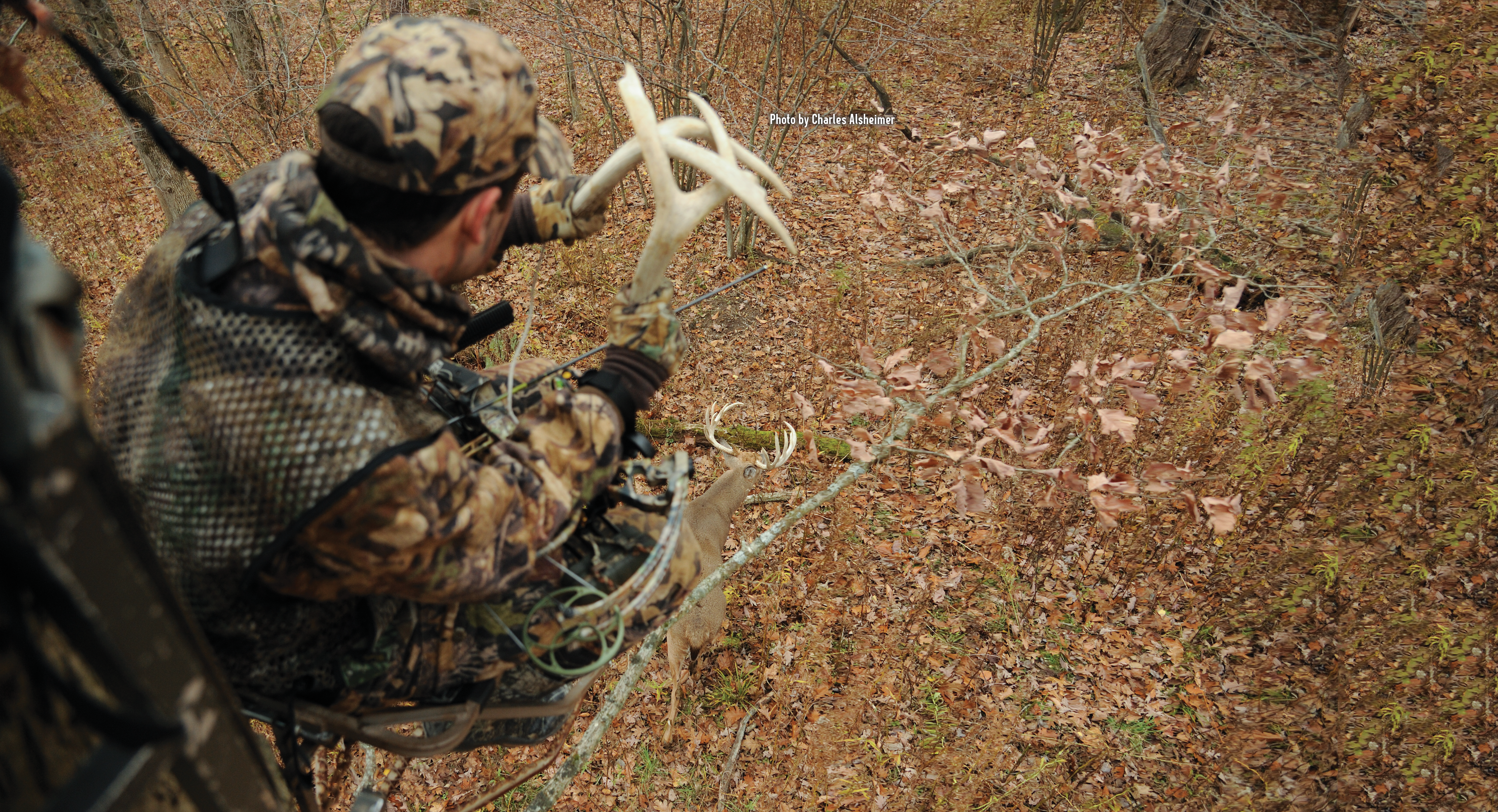When Alsheimer began calling to deer during the 1960s, he used only antlers. Although there were successes, it wasn’t until he began using a grunt tube, alone and in conjunction with antlers, that his success at luring deer close increased significantly.
Over the years, he discovered that deer are more responsive to a call than anything else. For this reason a grunt tube went with Alsheimer whether he was hunting with gun, bow or camera. Regardless of where he hunted in North America, he found that for every buck he rattled in, up to 20 would respond to grunting, bleating and wheezing.
“Whether you are a novice or seasoned veteran, it’s important to realize that you don’t need to know how to make every vocalization a whitetail is able to make,” Alsheimer said.

Alsheimer also taught us that there are four basic sounds (with variations) that whitetails make: bleat, grunt, wheeze and snort.
Among his favorite calls:
Bleat: Alsheimer found the bleat to be a good locator/coaxing call, much like a turkey yelp. He often used the bleat a couple of times just before and after he did a rattling sequence.
“I’ll also use it when the action is slow and I haven’t seen a deer in a while,” he said. “A bleat is easy to learn on most grunt tubes and a no-brainer if you have one of the gravity bleat canisters that are very popular. These canisters have holes in the top of them and when tipped upside down make a whitetail bleat.”
Fawn bleat: Alsheimer taught us how the fawn bleat is very similar to the bleat, but the major difference is that it is high pitched, like you would expect for a young animal.
“The fawn bleat is a phenomenal call for photographers who hunt whitetails throughout the year and for late-season deer hunters,” he said. “I’ve called countless does and bucks within camera range during the summer months using this call.
“During this time of the year, nearly all adult deer will be on high alert when they respond. When used during the autumn months, the fawn bleat is an excellent locator call. Bucks that hear it will often come to check it out because they know there must be a doe in the area.”
Basic grunt: Grunting is the vocalization of choice for whitetails. Bucks, does and fawns grunt. When it comes to the grunting sound that deer make it should be noted that all grunts do not sound the same because of each deer’s physical difference.
“No two deer will sound exactly the same,” Alsheimer said. “I’ve learned this through in-the-field experience and more than 30 years of raising deer. By way of example, I can be in my deer enclosure, out of sight of a deer that is grunting, and often know which buck is grunting.”
Alsheimer taught us how the tone of the grunt will often depend on the maturity level of the buck. Older bucks have a lot of bass to their voice, meaning their grunts sound very guttural.

“For the most part, I will not use a deep-throated guttural grunt unless I know I’m communicating with a mature buck,” he said. “If you try using such a grunt on a yearling or 2 1/2-year- old buck, there is the distinct possibility that he’ll turn tail and flee.”
Trailing grunt: The trailing grunt is a short grunt that bucks make when traveling through the woods or when around other deer. It’s not uncommon for a rut-crazed buck to make a short grunt every one to 10 steps if he’s in the right mood.
“If I see a buck walking through the woods, I’ll use this grunt to stop him and to coax him in my direction,” Alsheimer said. “This is also a call that I use when no deer are in sight. If a buck is sexually active but not with a doe, there is a good chance he’ll respond to a grunt.”
Tending grunt: The tending grunt can be a lethal weapon if used properly. When a buck is with a hot doe and is either frustrated by her rejections or is interrupted by another buck, he’ll make a grunt that has a ticking cadence.
“If I’m hunting in thick cover during the rut and a buck walks within sight of the stand, I’ll use a tending grunt to bring him within range,” Alsheimer said. “This is a great call to use when bucks are on the move and the rut is boiling over.”
Wheeze: The wheeze is an aggressive sound that bucks make when they are irritated by the presence of other bucks. There are times when a buck will grunt or snort before wheezing, but more often than not will wheeze only.

Alsheimer would make the wheeze naturally by inhaling over his tongue, with his cheeks tight to the edge of his tongue.
“It can be hard to master naturally and I suggest that you purchase a good behavioral video that illustrates the vocalizations in order to learn the sounds whitetails make,” he said. “There are also a number of commercial calls on the market that can make the wheeze.”
Charles J. Alsheimer was a preeminent expert on deer behavior and collaborated on groundbreaking research on the moon’s impact on whitetail breeding patterns. He authored seven best-selling books and hundreds of magazine articles on the whitetail. He served as field editor of Deer & Deer Hunting magazine for nearly 38 years and as host of Deer & Deer Hunting TV, which aired on the Outdoor Channel, before his untimely passing in 2017. His work on deer behavior was ahead of its time.

